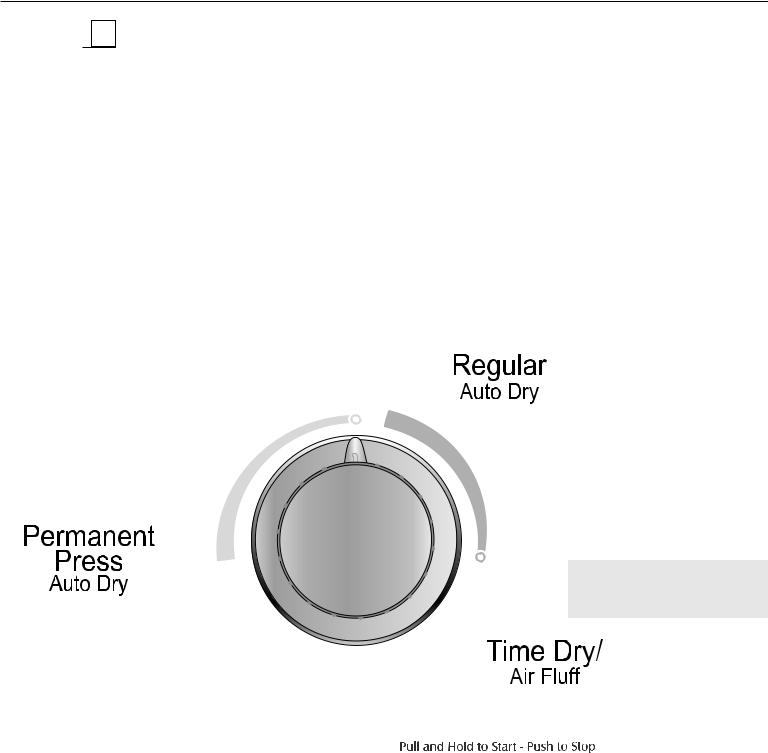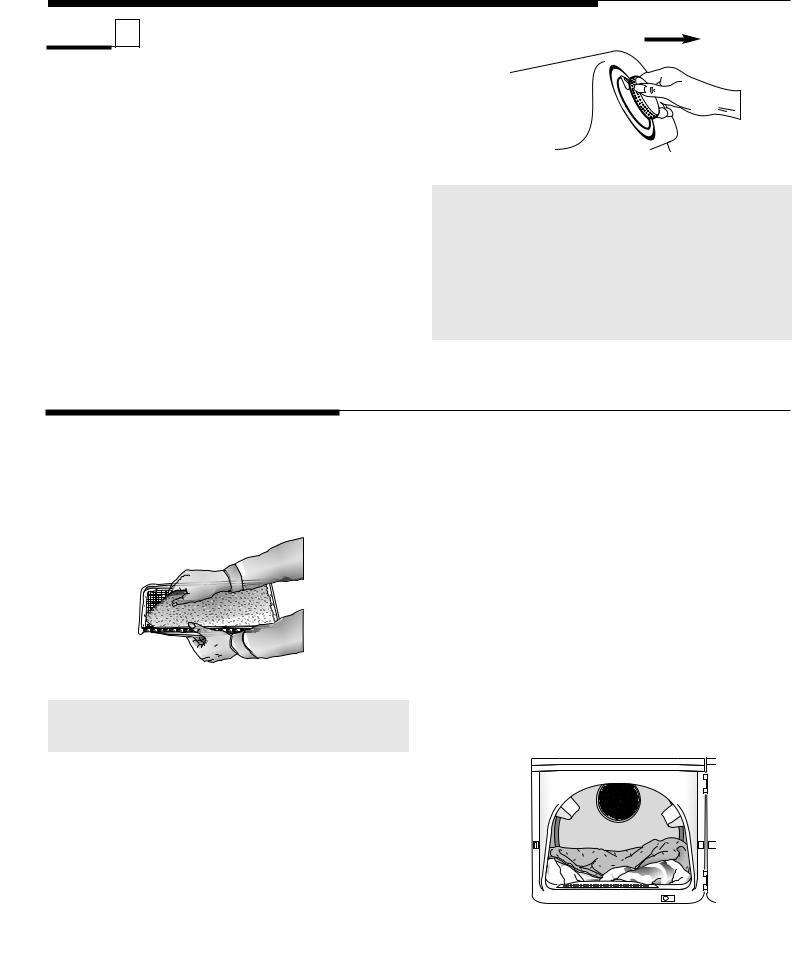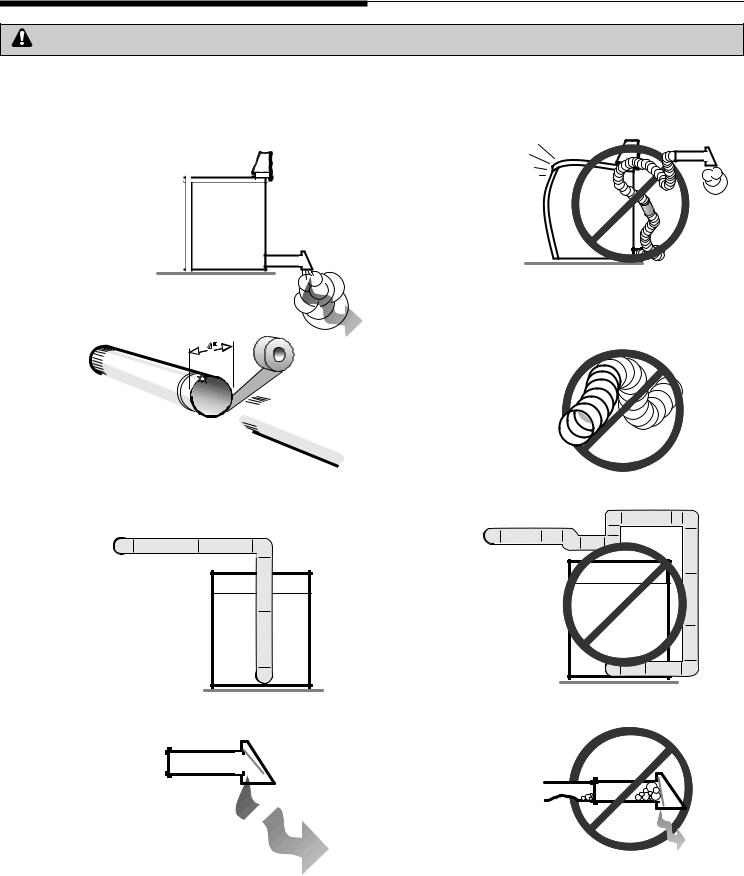Maytag MD-31 User Manual

Maytag Clothes Dryer |
MD-31 |
|
|
USER’S GUIDE
Congratulations on your purchase of a Maytag dryer! Your satisfaction is very important to us.
Read this manual for best results. It contains instructions to acquaint you with proper operating instructions and maintenance.
Save time and money. If something should go wrong, we suggest consulting the “Before You Call” section. It is designed to help you solve basic problems before consulting a service technician.
If you have questions, write us (include your model number and phone number) or call:
Maytag Appliances Sales Company Attn: CAIR® Center
P.O. Box 2370
Cleveland, TN 37320-2370 1-800-688-9900 USA 1-800-688-2002 CANADA
1-800-688-2080 USA TTY (for deaf, hearing impaired, or speech impaired)
(Mon.–Fri., 8am–8pm Eastern Time) Internet: http://www.maytag.com
Table of Contents
Safety Instructions . . . . . . . . . . . . . . . . 1-2 Controls at a Glance . . . . . . . . . . . . . . 3-5 Operating Tips . . . . . . . . . . . . . . . . . . . . . 5 Drying Rack . . . . . . . . . . . . . . . . . . . . . . . 6 Care and Cleaning. . . . . . . . . . . . . . . . . . 7 Replacing the Drum Light. . . . . . . . . . . . 7 Special Laundry Tips . . . . . . . . . . . . . . . 8 Dryer Exhaust Tips . . . . . . . . . . . . . . . . . 9 Before You Call . . . . . . . . . . . . . . . . . . . 10 Warranty . . . . . . . . . . . . . . . . . . . . . . . . . 11 Guide de L’ Utilisateur. . . . . . . . . . . . . . 12 Guía Del Usuario . . . . . . . . . . . . . . . . . . 24
|
|
|
|
|
|
|
|
|
|
|
|
|
|
|
|
|
|
|
|
|
Form No. Y81927 A |
Part No. 2206695 |
©2006 Maytag Appliances Sales Co. |
|
|
|
|
|
|

Important Safety Instructions
 WARNING: To reduce the risk of fire, explosion, electric shock, or personal injury when using your dryer follow basic safety precautions, including the following:
WARNING: To reduce the risk of fire, explosion, electric shock, or personal injury when using your dryer follow basic safety precautions, including the following:
 WARNING: For your safety, the information in this manual must be followed to minimize the risk of fire or explosion or to prevent property damage, personal injury or death.
WARNING: For your safety, the information in this manual must be followed to minimize the risk of fire or explosion or to prevent property damage, personal injury or death.
•Do not store or use gasoline or other flammable vapors and liquids in the vicinity of this or any other appliance.
WHAT TO DO IF YOU SMELL GAS
•Do not try to light any appliance.
•Do not touch any electrical switch.
•Do not use any phone in your building.
•Clear the room, building or area of all occupants.
•Immediately call your gas supplier from a neighbor’s phone. Follow the gas supplier’s instructions.
•If you cannot reach your gas supplier, call the fire department.
Installation and service must be performed by a qualified installer, service agency or the gas supplier.
 WARNING — Because gas may escape from your system which may not be detected by smell alone, resulting in a potentially extremely dangerous situation, it is recommended by gas suppliers that you purchase and install a ULapproved gas detector(s) in your home. Your local gas supplier can assist you in obtaining a gas detector. Please install, maintain and use the gas detector in accordance with the gas detector manufacturer’s instructions.
WARNING — Because gas may escape from your system which may not be detected by smell alone, resulting in a potentially extremely dangerous situation, it is recommended by gas suppliers that you purchase and install a ULapproved gas detector(s) in your home. Your local gas supplier can assist you in obtaining a gas detector. Please install, maintain and use the gas detector in accordance with the gas detector manufacturer’s instructions.
1.Read all instructions before using the appliance.
2.To avoid the possibility of fire or explosion:
a.Do not dry items that have been previously cleaned in, washed in, soaked in, or spotted with gasoline, dry-cleaning solvents, other flammable or explosive substances as they give off vapors that could ignite or explode. Any material on which you have used a cleaning solvent, or which is saturated with flammable liquids or solids, should not be placed in the dryer, until all traces of these flammable liquids or solids and their fumes have been removed. There are many highly flammable items used in homes, such as: acetone, denatured alcohol, gasoline, kerosene, some liquid household cleaners, some spot removers, turpentine, waxes and wax removers.
b.Items containing foam rubber (may be labeled latex foam) or similarly textured rubber-like materials must not be dried on a heat setting. Foam rubber materials when heated, can under certain circumstances produce fire by spontaneous combustion.
3.Do not allow children to play on or in the appliance. Close supervision is necessary when the appliance is used near children.
4.Before the appliance is removed from service or discarded, remove the door to the drying compartment.
5.Do not reach into the appliance if the drum is moving.
6.Do not install or store this appliance where it will be exposed to the weather.
7.Do not tamper with controls.
8.Do not repair or replace any part of the appliance or attempt any servicing unless specifically recommended in published user-repair instructions that you understand and have the skills to carry out.
9.Do not use fabric softeners or products to eliminate static unless recommended for dryer use by the manufacturer of the fabric softener or product.
10.Clean the lint screen before or after each load.
11.Keep the area around the exhaust opening and surrounding areas free from lint accumulation, dust and dirt.
12.The interior of the dryer and exhaust duct should be cleaned periodically by qualified service personnel.
13.This appliance must be properly grounded. Never plug the appliance cord into a receptacle which is not grounded adequately and in accordance with local and national codes. See installation instructions for grounding this appliance.
14.Do not sit on top of the clothes dryer.
1

WARNING! FIRE HAZARD
Do not place into your dryer items that have been spotted or soaked with vegetable oil or cooking oil. Even after being washed, these items may contain significant amounts of these oils. The remaining oil can ignite spontaneously. The potential for spontaneous ignition increases when the items containing vegetable oil or cooking oil are exposed to heat. Heat sources, such as your clothes dryer, can warm these items, allowing an oxidation reaction in the oil to occur. Oxidation creates heat. If this heat cannot escape, the items can become hot enough to catch fire. Piling, stacking or storing these kinds of items may prevent heat from escaping and can create a fire hazard.
All washed and unwashed fabrics that contain vegetable oil or cooking oil can be dangerous. Washing these items in hot water with extra detergent will reduce, but will not eliminate, the hazard. Always use the “cool down” cycle for these items to reduce the items’ temperature. Never remove these items from the clothes dryer hot or interrupt the drying cycle until the items have run through the “cool down” cycle. Never pile or stack these items when they are hot.
Important Safety
Notice & Warning
The California Safe Drinking Water and Toxic Enforcement Act of 1986 (Proposition 65) requires the Governor of California to publish a list of substances known to the State of California to cause cancer or reproductive harm, and requires businesses to warn customers of potential exposures to such substances.
Users of this appliance are hereby warned that the burning of gas can result in low–level exposure to some of the listed substances, including benzene, formaldehyde, and soot, due primarily to the incomplete combustion of natural gas or liquid petroleum (LP) fuels. Exhaust ducts should be kept free of obstructions and properly exhausted dryers will minimize exposure.
IMPORTANT: Because of continuing product improvements, Maytag reserves the right to change specifications without notice. For complete details, see the Installation Instructions packed with your product before selecting cabinetry, making cutouts or beginning installation.
What you need to know about safety instructions
Warning and Important Safety Instructions appearing in this manual are not meant to cover all possible conditions and situations that may occur. Common sense, caution, and care must be exercised when installing, maintaining or operating appliance.
Always contact your dealer, distributor, service agent, or manufacturer about problems or conditions you do not understand.
Recognize safety symbols, words, labels
 WARNING
WARNING
WARNING – Hazards or unsafe practices which COULD result in severe personal injury or death.
 CAUTION
CAUTION
CAUTION – Hazards or unsafe practices which COULD result in minor personal injury.
SAVE THESE INSTRUCTIONS
2

Controls at a Glance
Step 1
Select Temperature
To select the correct temperature, turn the temperature control to one of four choices; Regular, Medium, Delicate or Air Fluff.
DRYER TEMPS |
LOAD TYPE |
Regular For sturdy cottons or those labeled “Tumble Dry.”
For permanent press, synthetics, lightweight cottons or items labeled “Tumble Dry
Medium
Medium."
Delicate For heat sensitive items labeled “Tumble Dry Low” or “Tumble Dry Warm.”
Air Fluff Tumbles without heat. Used for sensitive loads or items needing freshening.
Step 2
Select Signal
End of Cycle Signal
Shortly before the cycle is complete, an audible signal will sound. During the cool down portion of the Permanent Press cycle, the audible signal will sound intermittently.
3

Step 3
Select Cycle
To select a cycle, push in and rotate the control dial to the desired setting. When using an Auto Dry cycle, the control dial should be set on “Normal Dry” for most loads.
Loads of larger or bulkier size may require the “More Dry” setting to completely dry the load. The “Less Dry” setting is best suited for lightweight fabrics or for leaving some moisture in the clothing at the end of the cycle.
Permanent Press Auto Dry
The Permanent Press Auto Dry cycle is designed to dry wrinkle free cottons, synthetic fabrics, double knits and permanent press fabrics automatically. It minimizes wrinkling by providing an unheated cool-down period at the end of the cycle.
Control features vary by model.
Regular Auto Dry
The Regular Auto Dry cycle is designed to dry loads such as towels, underwear, t-shirts, jeans, etc.
Time Dry/Air Fluff
This cycle can be used to regulate the drying time. Use with Air Fluff, Delicate, Medium or Regular temperature settings. For timed drying, turn the control dial until the pointer points to the proper time setting in the Time Dry/Air Fluff cycle.
NOTE: Using the Air Fluff temperature setting will require a longer drying time.
Special Options
Damp Dry is located on the Time Dry/Air Fluff section of the dial. It is designed to partially dry items and can be used with any temperature selection. Damp Dry will provide 20 minutes of tumbling time, followed by 5 minutes of cool-down tumbling.
Wrinkle Release will release wrinkles from items that are clean and dry but only slightly wrinkled, such as from a crowded closet or suitcase, or from sitting in the dryer too long after the cycle has ended. Wrinkle Release provides 10 minutes of tumbling followed by five minutes of cool-down tumbling and can be used with any temperature selection.
4

Controls at a Glance (continued)
Step 4
Pull the Control Dial
Out to Start
Pull the control dial out and hold briefly to start the dryer. The dryer door must be closed for the dryer to start.
NOTE: When pushed in, the dial can be turned in either direction to select a cycle. Once started, the dial will not advance at a specific rate during the Auto Dry cycles. At first the dial may not advance at all. Toward the end of the cycle (when the load begins to dry) the dial will advance at a more regular rate and much more quickly. This is normal operation.
Operating Tips
Clean the Lint Filter
•After each load.
•To shorten drying time.
•To operate more energy efficiently.
NOTE: Do not operate the dryer without the lint filter in place.
Load the Dryer Properly
•Place only one washload in the dryer at a time.
•Mixed loads of heavy and lightweight clothes will dry differently. Lightweight clothes will dry, while heavy clothes may be damp.
•Add one or more similar items to the dryer when only one or two articles need drying. This improves the tumbling action and drying efficiency.
•Overloading restricts tumbling action, resulting in uneven drying as well as excessive wrinkling of some fabrics.
•When drying large, bulky items such as a blanket or comforter, it may be necessary to reposition the load during the cycle to ensure even drying.
5

Drying Rack (select models)
Installing the Drying Rack:
1.Open dryer door.
2.Position drying rack in tumbler placing the two rear legs in the two recessed areas in the back wall of the dryer.
3.Place the front lip of the drying rack on top of the lint filter.
4.Place items to be dried on the rack, leaving space between them so air can reach all the surfaces.
5.Close the dryer door.
6.Use the Time Dry cycle. Select time according to moisture and weight of item. Start the dryer. It may be necessary to reset the timer if a longer drying time is needed.
Handle
Rear Legs
Front
Storing the Drying Rack:
On dryer sides:
The drying rack hanger fits between the dryer top and the dryer cabinet.
1.Place the flange on the hanger in the seam between the top and the cabinet. Push all the way in.
2.Face the top of the drying rack toward the side of the dryer cabinet.
3.Place the drying rack handle over the lip of the hanger.
On dryer back:
1.Place the drying rack hanger between the dryer top and the dryer cabinet just below the back of the control panel.
2.Place the flange in the seam and push all the way in.
3.Face the top of the drying rack toward the back of the dryer cabinet.
4.Place the drying rack handle on the lip of the hanger.
NOTE: If not included with your dryer, contact your Maytag dealer for the accessory kit MAL1100AXX or call 1-800-688-8408.
Flange
Lip
|
|
|
SUGGESTED |
|
|
SUGGESTED ITEMS |
|||
|
TEMP. SETTINGS |
|||
|
|
|
|
|
|
|
|
|
|
|
Washable sweaters (block to |
|
Heat |
|
|
shape and lay flat on rack) |
|
||
|
|
|
|
|
|
Stuffed toys (cotton or |
|
Heat |
|
|
polyester fiber filled) |
|
||
|
|
|
|
|
|
Stuffed toys (foam or |
|
Air Fluff |
|
|
rubber filled) |
|
||
|
|
|
|
|
|
Foam rubber pillows |
|
Air Fluff |
|
|
Sneakers |
|
Air Fluff or Heat |
|
|
|
|
|
|
 WARNING: Drying foam rubber, plastic or rubber on a heat setting may cause damage to the item and could lead to a fire hazard.
WARNING: Drying foam rubber, plastic or rubber on a heat setting may cause damage to the item and could lead to a fire hazard.
6

Care & Cleaning
Control Panel
Clean with a soft, damp cloth. Do not use abrasive substances.
Tumbler
Remove any stains such as crayon, ink pen or fabric dye from new items (such as towels or jeans) with an all-purpose cleaner. Then tumble old towels or rags to remove any excess stain or cleaning substance. Once
these steps are done, stains may still be visible, but should not transfer to subsequent loads.
Cabinet
Wipe off any marks with soap and water. Use an appliance wax once a year if desired.
Dryer Exhaust System
Inspect and clean once a year to maintain optimum performance. The outside exhaust hood should be cleaned more frequently to ensure proper operation. (Refer to the Installation Instructions for more information.)
Replacing the Drum Light
Instructions for replacing the bulb:
1.Unplug or disconnect the dryer from the electrical power supply.
2.Open the door and use a Phillips screwdriver to remove the screw attaching the lens to the tumbler front.
3.Remove lens cover by pulling cover toward center of tumbler.
4.Rotate bulb counter-clockwise to remove from socket.
5.Replace the bulb with a 120 volt, 10 watt maximum candelabra base light bulb.
6.Turn the light bulb clockwise into socket.
7.Replace lens cover by hooking plastic tabs into tumbler front below the light housing.
8.Reinstall the screw into the lens cover screw hole.
9.Reconnect dryer to power supply.
7

Special Laundry Tips
Please follow the care label or manufacturer’s instructions for drying special items. If care label instructions are not available, use the following information as a guide.
|
ITEM |
|
LAUNDERING TIPS |
|
|
• |
Follow the care label instructions or dry on the Regular cycle. |
|
Bedspreads and Comforters |
• |
Be sure the item is thoroughly dry before using or storing. |
|
|
• |
May require repositioning to ensure even drying. |
|
|
|
|
|
Blankets |
• |
Dry only one blanket at a time for best tumbling action. |
|
• |
Be sure the item is thoroughly dry before using or storing. |
|
|
|
||
|
|
|
|
|
Curtains and Draperies |
• |
Use the Permanent Press cycle to help minimize wrinkling. |
|
• |
Dry in small loads for best results and remove as soon as possible. |
|
|
|
||
|
|
|
|
|
Cloth Diapers |
• |
Use the Regular cycle for soft, fluffy diapers. |
|
|
|
|
|
Down-Filled Items |
• |
Use the Regular cycle and a delicate temperature setting. |
|
• |
Place a clean pair of sneakers in the dryer with the item to fluff the down |
|
|
(jackets, sleeping bags, |
||
|
|
comforters, etc. Adding a couple of dry towels shortens dry time and |
|
|
comforters, etc.) |
|
|
|
|
absorbs moisture. |
|
|
|
|
|
|
|
|
|
|
Foam Rubber |
• |
DO NOT dry on a heat setting. Use the Time Dry/Air Fluff (no-heat) cycle. |
|
(rug backs, stuffed toys, |
• |
WARNING – Drying a rubber item with heat may damage it or be a fire |
|
certain shoulder pads, etc.) |
|
hazard. |
|
|
• |
DO NOT dryer-dry kapok or foam pillows. |
|
Pillows |
• |
Use the Regular cycle. |
|
• Add a couple of dry towels and a pair of clean sneakers to help the |
||
|
|
||
|
|
|
tumbling action and to fluff the item. |
|
|
|
|
|
Plastics |
• |
Use the Time Dry/Air Fluff cycle on a Delicate or Air Fluff temperature |
|
(shower curtains, outdoor |
|
depending on the care label instructions. |
|
furniture covers, etc.) |
|
|
|
|
|
|
IMPORTANT: Avoid Dryer Drying . . .
•Fiberglass Items (curtains, draperies, etc.)
•Woolens, unless recommended on the label
•Vegetable or cooking oil soaked items (See page 2)
8

Dryer Exhaust Tips
WARNING — Plastic or nonmetal flexible duct presents a potential fire hazard.
Do
Read the installation instructions and the user’s guide.
Do
Let your dryer exhaust the air easily.
Do

Use 4 inch diameter
rigid metal duct. Tape all joints, including at the dryer. Never use lint-trapping screws.
Do
Keep duct runs as straight as possible.
Do
Clean all old ducts  before installing your new
before installing your new
dryer. Be sure vent flap opens
and closes freely. Inspect and clean the exhaust system annually.
Don’t
Let a poor exhaust system cause slow drying.
Don’t
Restrict your dryer with a poor exhaust system.
Don’t
Use plastic, thin foil, or non-metal flexible duct.
Don’t
Use longer than necessary duct runs with many elbows.
Don’t
Allow crushed or clogged ducts and vent.
9

Before You Call
Check the following if your clothes dryer...
Doesn’t Run
•Be sure the door is shut.
•Is the electrical cord plugged in?
•Has a fuse blown or the circuit breaker tripped?
•Restart the dryer if the door was opened during the cycle.
Doesn’t Heat
•Has a fuse blown or the circuit breaker tripped?
•Select a heat setting, not air fluff.
•Check that the gas supply is on for gas dryers.
•Clean the lint filter and exhaust duct.
•Dryer timer may have moved into the cool-down portion of the cycle.
Doesn’t Dry Properly
•Check all of the above, plus . . .
•Check the exhaust hood outside the house, does it open and close freely?
•Check exhaust system for lint build-up. Ducting should be inspected and cleaned annually.
•Use rigid 4” metal exhaust duct.
•Do not overload. 1 wash load = 1 dryer load.
•Sort heavy items from lightweight items.
•Large, bulky items like blankets or comforters may require repositioning to ensure even drying.
•Check the washer to be sure it is draining properly to extract water from the load.
•Clothes load is too small to tumble properly. Add a few towels.
Is Noisy
•Check the load for objects such as coins, nails, etc. Remove promptly from dryer.
•It is normal to hear the dryer gas valve or heating element cycle on and off during the drying cycle.
•The dryer should be level and installed on a solid floor.
•Be sure the rubber feet are installed on the leveling legs.
•A clicking noise may be the timer advancing.
•It is normal for the dryer to hum due to the high velocity of air moving through the dryer drum and exhaust system.
Control Knob Advances Slowly
•This is normal operation for an Auto Dry cycle, especially at the beginning of cycle. Once the load begins to dry, the control knob will start to advance. The rate of advancement will be slow at the beginning of the cycle because there is more moisture in the load. As the load becomes more dry, the control knob will advance more quickly.
Dries Unevenly
•Seams, pockets and other similar heavy areas may not be completely dry when the rest of the load has reached the selected dryness level. This is normal. Select the “More Dry” setting if desired.
•If one heavy item is dried with a lightweight load, such as one towel with sheets, it is possible that the heavy item will not be completely dry when the rest of the load has reached the selected dryness level. Sort heavy items from lightweight items for best drying results.
Has an Odor
•Household odors such as from painting, varnishing, strong cleaners, etc. may enter the dryer with the surrounding room air. This is normal as the dryer draws the air from the room, heats it, pulls it through the tumbler and exhausts it to the outside. When these odors are present in the air, ventilate the room completely before using the dryer.
For further assistance contact Maytag Appliances Sales Company, Maytag Customer Assistance: U.S. 1-800-688-9900 or Canada 1-800-688-2002
U.S. customers using TTY for deaf, hearing impaired or speech impaired, call 1-800-688-2080.
10
